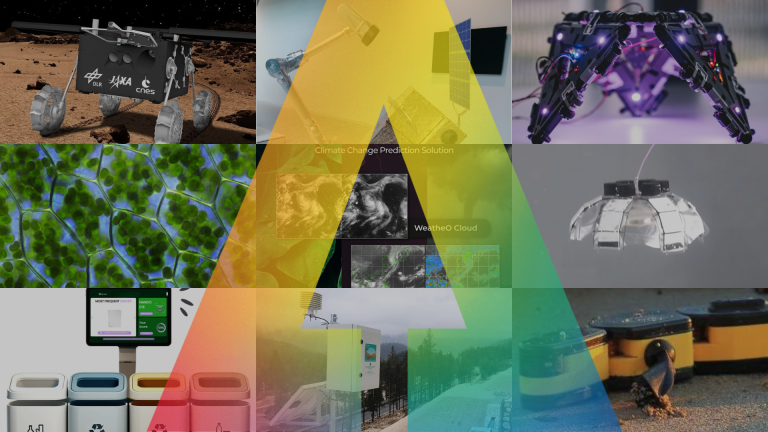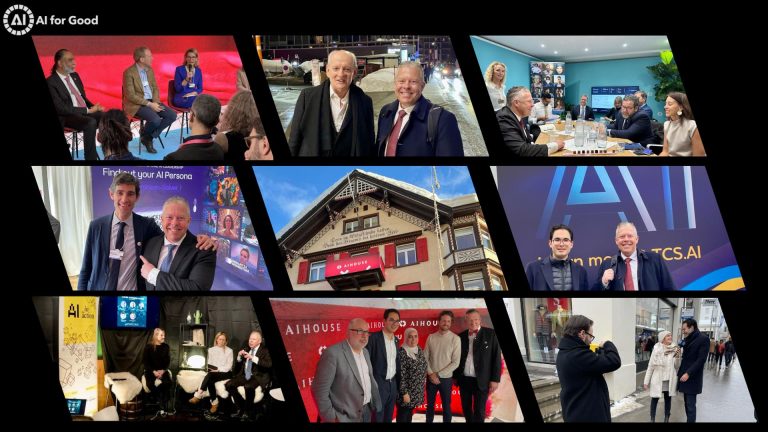“Revolutionizing Space Exploration: How AI Robots Propel Sustainable Discovery”
By Anjali Roy, edited by Alena Radziukevich
In recent years, human space exploration has accelerated like never before, fueled by an increasing desire to decode cosmic mysteries and broaden our comprehension of the universe. As we delve deeper into the cosmos, the necessity for sustainable practices is paramount. This is where the fusion of artificial intelligence (AI) and robotics comes into play, heralding a transformative era. AI-driven robotics not only facilitate a path toward sustainable space exploration but also bolster the advancement of Sustainable Development Goals (SDGs), redefining our approach to cosmic exploration. At the AI for Good Global Summit 2023, a compelling panel discussion titled “Harnessing AI-Powered Robotics for Sustainable Space Exploration” featured leading minds from the University of Surrey, Stanford University, the DLR Robotics Institute, and Field AI, showcasing how AI-infused robotic solutions can expedite our quest for sustainable exploration beyond Earth. Watch the full session here.
Moderated by Vandi Verma, Deputy Manager for Mobility and Robotics Systems at NASA’s Jet Propulsion Laboratory (JPL), this enlightening panel ventured into strategies aimed at achieving sustainable space exploration through AI-enabled robotics. The discussion highlighted not only practical applications but also the critical necessity of global collaboration and commercial partnerships in realizing our collective aspirations for sustainable exploration beyond our planet.
Deep Dive Into Sustainable Space Design
Marco Pavone, Associate Professor of Aeronautics and Astronautics at Stanford University, provided invaluable insights into the transformative potential AI holds in robotic system architecture. He emphasized that AI is revolutionizing the design process, improving robotic efficiency, and driving down development costs via data-driven methodologies. With AI, robots can be trained for autonomous tasks, ushering in a new era marked by efficiency and innovation in space exploration. However, achieving this requires an adaptable system capable of research and perception in groundbreaking and sustainable manners that benefit space missions.
“AI allows us to monitor the spacecraft with a level of accuracy that you couldn’t do with traditional methodologies,” Marco Pavone emphasized.
Achieving sustainability in space exploration requires a holistic approach that takes into consideration environmental, operational, financial, and societal factors. Environmental sustainability is vital for mitigating orbital pollution resulting from the rising number of satellite launches, emphasizing the need for responsible satellite disposal and debris mitigation strategies. Operational sustainability involves the standardization of processes to enhance interoperability among diverse stakeholders, including government agencies, private firms, and international collaborators. Societal sustainability entails equitable resource allocation and a commitment to leverage space exploration for the benefit of all humanity. By embracing responsible practices, promoting collaboration, and utilizing innovative funding models, we can forge a sustainable future in space exploration guided by the principles of stewardship, inclusivity, and long-term vision.
Challenges and Innovation in AI, Robotics, and Sustainable Space Missions
Yang Gao, Professor of Space Autonomous Systems and Head of STAR LAB at the University of Surrey, contended that forward-thinking strategies are imperative for successful space missions. Traditional space endeavors have often been marked by fixed designs, yet Professor Gao envisions a future of sustainably designed space systems that support long-term human habitation in space. This paradigm shift necessitates robust mobility, enhanced autonomous capabilities, and design principles that ensure the durability of space infrastructure.
The vast domain of space exploration encompasses a plethora of activities, from spacecraft launches to orbital operations, each with distinct sustainability challenges and opportunities. Sustainable practices are increasingly being woven into the operational life cycle of satellites and spacecraft from the launch phase onward. Furthermore, the notion of recycling in space—encompassing the capturing, removal, and re-purposing of inoperative satellites and debris—is emerging as a critical element of sustainable operations. AI-powered robotics can facilitate this through innovative strategies such as on-orbit servicing, allowing remote repairs and maintenance, thereby extending the longevity of assets and curbing space debris accumulation.
However, the surge in satellite and rocket launches has resulted in an overwhelming volume of data, posing challenges for conventional analytical methods. Ali Agha, CEO and Co-Founder of Field AI, highlighted the significant role AI will play in redefining data analysis, trend extraction, and decision-making in space exploration. Various AI models not only predict outcomes but also assess trends across vast arrays of satellite data. The enhancement of autonomous capabilities in space robots promises improved sustainability, cost-effectiveness, and resource management. AI’s adaptability over time facilitates the correlation of observations, responsive adjustments to dynamic conditions, and refinement of control mechanisms, laying a solid foundation for more sustainable and efficient space exploration initiatives.
“AI is a family of technologies that contributes to various stages of a space mission—from computing through machine learning to integrating AI into hardware design,” remarked Yang Gao.
Fostering a Global Vision for Sustainable Space Exploration
The discussion underscored the critical role that commercial partnerships play in pioneering sustainable space exploration. Businesses contribute significantly to environmental monitoring and ensuring long-term viability of habitats on other planets. By leveraging AI solutions, these partners can assist in creating sustainable infrastructure on extraterrestrial worlds, thus paving the way for extended human endeavors in space.
Environmental monitoring, powered by earth-observing satellites, is key to understanding climate change and ecological transitions. Partnerships between space agencies and commercial enterprises are essential in leveraging infrastructure and expertise to analyze extensive datasets. The quest for sustainability beyond Earth also demands creative solutions, as commercial entities must employ AI technologies to develop sustainable habitats on other planets, ensuring our survivability in alien environments. Cooperation among private firms and various sectors becomes vital, fostering a cohesive approach to meet the challenges and opportunities that lie ahead. Concurrently, investing in education and workforce training remains essential to sustain the space sector and motivate future generations.
According to Armin Wedler, Head of the planetary exploration domain at the DLR Robotics Institute, promoting communication, collaboration, and the establishment of legal guidelines among nations is critical in supporting global discussions that uphold ethical practices.
“I am very optimistic about a future where humanity collaborates to build an exciting and forward-looking infrastructure,” expressed Armin Wedler.
Looking to the future, the panel discussion spotlighted the immense potential of AI-powered robotics to enhance sustainable space exploration. By harnessing the capabilities of AI-driven robotics, humanity can unlock new frontiers, deepen our understanding of the cosmos, and pave the way for a sustainable future in space. As we embark on the journey that extends the limits of human discovery, collaboration, innovation, and visionary leadership will be the guiding principles essential for realizing our ambitious aspirations for the future of space exploration.






